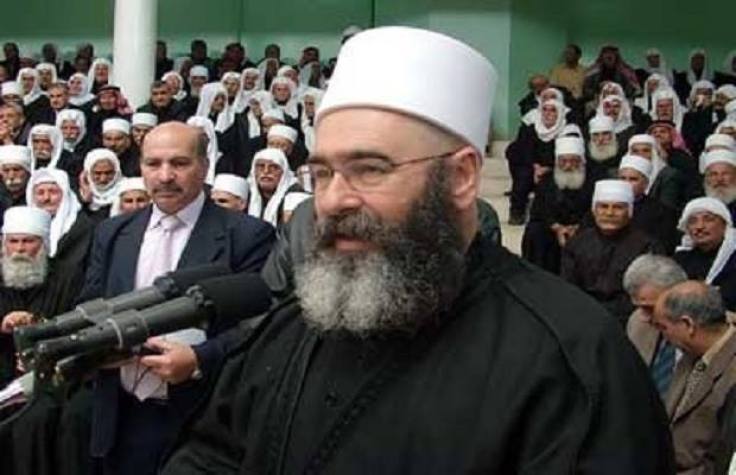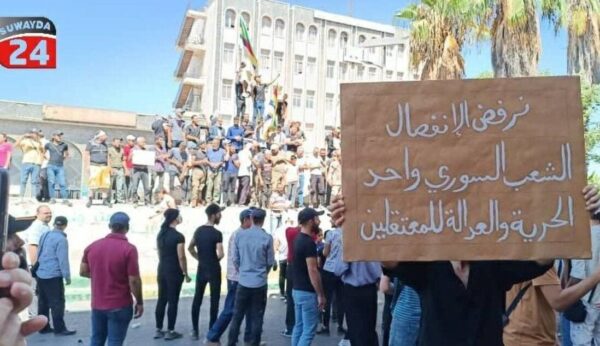Bedouin clans in southern Syria joined the popular protests taking place in Sweida Governorate for the fifth day in a row.
Local sources in the region told Asharq Al-Awsat on Friday that a delegation of youth from the southern tribes arrived at Al-Seer Square in the city of Sweida, and joined the protesters, declaring their solidarity with the popular uprising, and chanting: “Bedouins and Druze are hand in hand.”
Video clips broadcasted by the Sweida 24 website showed young Bedouin tribesmen from the south joining the protesters, amid welcoming cheers from the region’s Druze population, the sources reported.
They stressed that the move came in response to attempts by the security services during the past decades to ignite discord between the Druze and the Sunni Bedouin communities.
The participation of the Bedouin clans is an important shift in the course of the protests, which no longer represent a specific sect, but rather the majority of the Syrian population, the sources underlined. It also highlights the historical relations that linked Sweida with its surrounding Bedouin clans, in the face of all those who tried to sow discord during the past years.

This came hours after Damascus made an attempt to contain the protests by assigning the governor of Sweida, Bassam Parsik, to meet with the spiritual head of the Druze community, Sheikh Hikmat Al-Hijri, in the town of Qanawat, on Wednesday evening.
Media reports said that the governor was dispatched by Damascus to calm down the situation and offer a set of solutions. However, Al-Hijri rejected the proposal, saying that the matter did not require mediation.
“There won’t be any contacts before the demands of the street are met,” he stated.
The decree that prompted the protests
The protests erupted a week after Syrian President Bashar Assad issued two decrees doubling public sector wages and pensions, sparking inflation and compounding economic woes for others
The U.S. dollar has strengthened from 7,000 Syrian pounds at the beginning of 2023 to 15,000 now. At the onset of Syria’s uprising turned civil war in 2011, the dollar was trading at 47 pounds.
The protests are concentrated in the southern city of Sweida, home to the country’s Druze minority, and the nearby province of Daraa, often considered the birthplace of Syria’s uprising 13 years ago. The protests in Sweida against the government and corruption have intensified and turned violent, while Daraa, back under government control since 2018, has experienced high crime and clashes between militias.
Assad’s decision to hike wages and pensions comes as the cash-strapped government continues to restructure an expensive subsidy program for fuel, gasoline, and wheat for bread. Soon after the decision, public transport and fuel fares increased. The economy has already been struggling after years of conflict, corruption, and mismanagement, and Western-led sanctions on the government over accusations of war crimes and involvement in the illicit narcotics trade.

Leave a Reply
You must be logged in to post a comment.